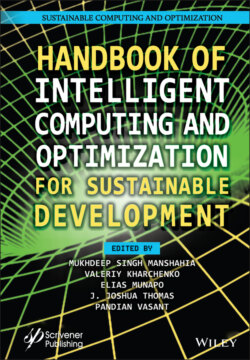Читать книгу Handbook of Intelligent Computing and Optimization for Sustainable Development - Группа авторов - Страница 125
5.3.1.1 System Model
ОглавлениеThe overall system model that can be employed in cognitive engine for radio signal monitoring and classification using ML techniques is shown in Figure 5.2. First two blocks represent the secondary user (SU) receiver that include antenna for scanning the spectrum and RF stage, that down-converts received RF signal to baseband complex signal in form I + jQ samples at some intermediate frequency. Next stage is TF analysis block which estimates joint TF energy density for the incoming complex baseband signal of some fixed sample length. Our main hypothesis for modulation classification using DL network is that preprocessing of time domain IQ samples can enhance the learning capability of CNNs and increase the classification accuracy as compared to benchmark work done in [19] which uses only time domain IQ samples as input. Hence, in this work, TF distributions are adopted for obtaining two dimensional (2D) image pattern of modulated signals, i.e., short time Fourier transform (STFT), as preprocessing unit.
Figure 5.2 Block diagram for the proposed blind identification method.
Next stage is deep NN block that takes 2D TF image as the input. In this block, we have employed widely used CNN, and it has ability to extract features from image autonomously. Exciting feature of CNN is it avoids the tedious task of manual feeding of features to classify object in hand. Thus, CNN works as feature extractor and classifier of modulated signals by taking the input as TF image of baseband IQ time samples. Since system model presented uses the TF analysis block that captures phase information, energy density information and hardware and channel impairments during trans-reception.
In this work, CNN learns modulation features and channel models from TF spectral images and intuitively able to design the matched filter (MF) for each modulation scheme and provide some filter gain at lower SNR. Thus, without the expert understanding or estimation of the underlying modulated waveform, CNN can blindly classify modulation encountered.
The last block is a baseband processing unit within the cognitive radio. This block processes the identified modulation signal to classify whether it is the primary user or secondary interfere without demodulation of the received signal. Then, it can optimize the bandwidth as per modulation types or identified radio access techniques for dynamic spectrum allocation in a next-generation wireless system.
